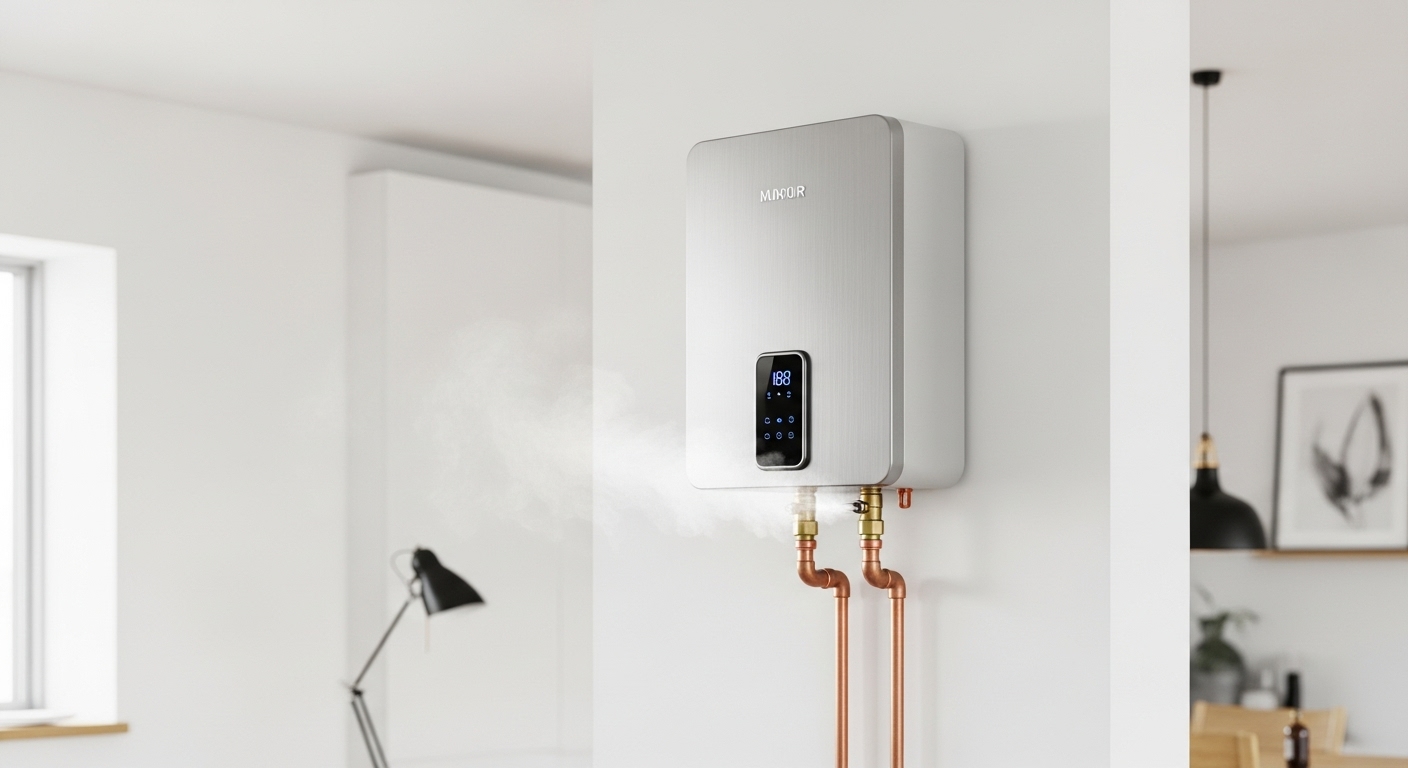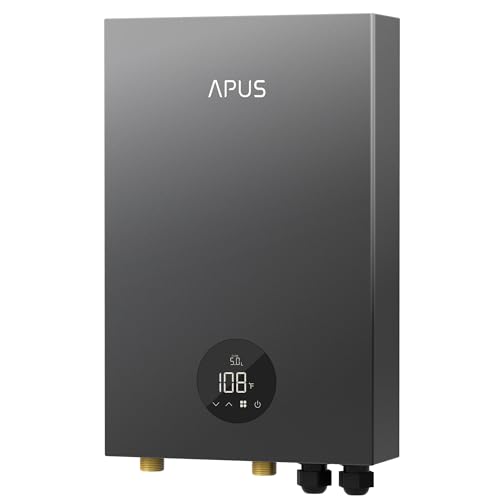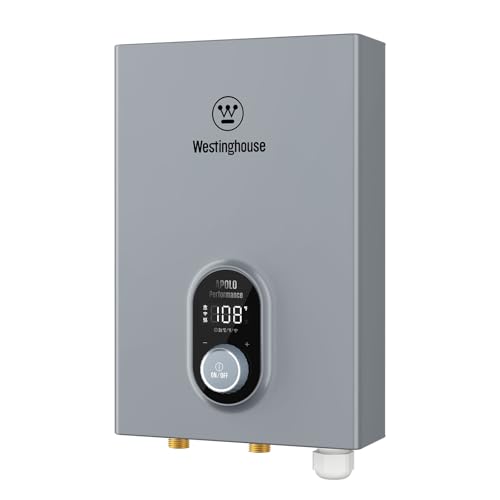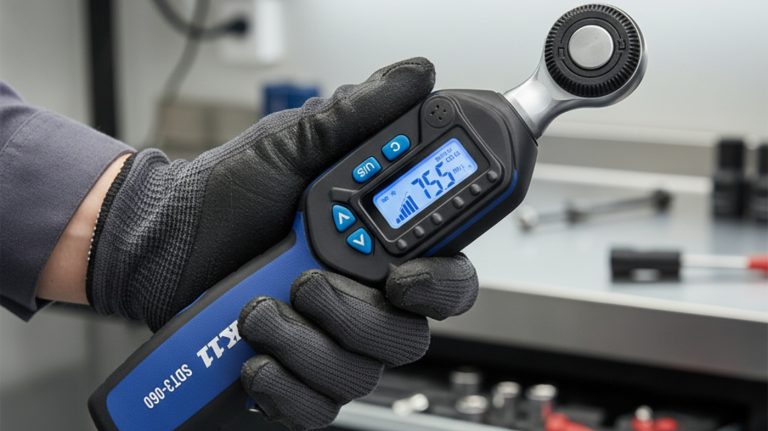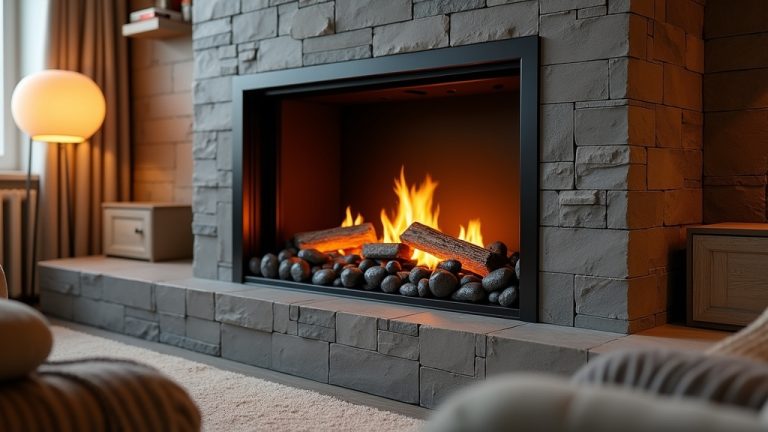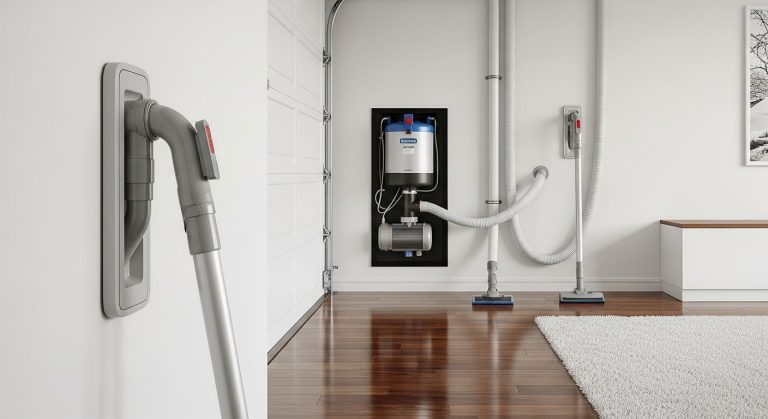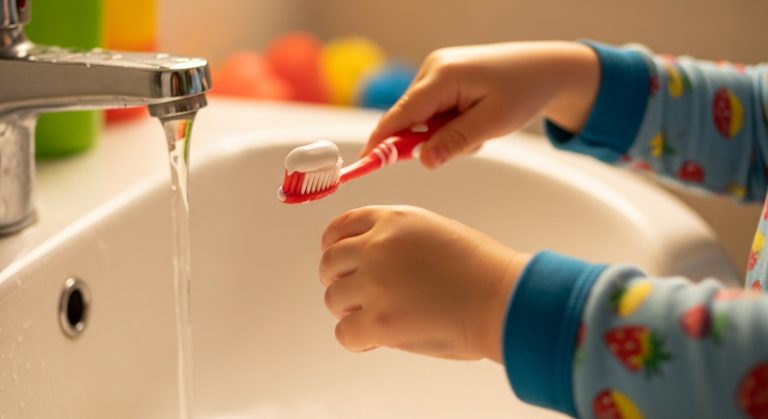Best Tankless Heater: Ultimate Guide to Endless Hot Water
Tired of running out of hot water mid-shower? Tankless water heaters deliver unlimited hot water on demand while saving space and energy costs.
These innovative systems heat water instantly as it flows through the unit, eliminating the need for bulky storage tanks. Whether you’re upgrading your home or building new, choosing the right tankless heater can transform your daily routine.
This comprehensive guide reveals everything you need to know about selecting, installing, and maintaining the perfect tankless water heating solution for your home.
Key Takeaways
- Tankless water heaters provide unlimited hot water on demand by heating water instantly as it flows through the unit, eliminating the need for bulky storage tanks and ensuring you never run out of hot water during extended use.
- Energy efficiency is significantly superior with tankless systems achieving 95-98% efficiency ratings compared to 60-80% for traditional tank heaters, potentially reducing water heating costs by 20-30% annually through elimination of standby heat loss.
- Proper sizing is crucial for optimal performance – calculate your household’s peak demand by adding up simultaneous usage (showers need 2.5 GPM, kitchen sinks 1.5 GPM) and consider temperature rise requirements based on your climate.
- Space-saving wall-mounted design frees up valuable floor space with most units measuring less than 2 feet in height and width, offering flexible installation options including outdoor mounting for weather-resistant models.
- Gas vs electric models offer different advantages – gas units provide higher flow rates (5-12 GPM) and lower operating costs, while electric models offer precise temperature control, compact size, and quieter operation.
- Regular maintenance extends lifespan significantly with quality tankless units lasting 15-20 years when properly maintained through annual descaling, filter cleaning, and professional inspections to prevent mineral buildup.
- Smart technology integration enhances convenience with features like WiFi connectivity, smartphone app control, usage tracking, and diagnostic capabilities that enable remote monitoring and optimize energy efficiency.
Tankless Water Heaters Overview
Tankless water heaters represent a revolutionary approach to home water heating. Unlike traditional tank systems that store and constantly reheat water, these units activate only when you turn on a hot water tap.
The technology works through powerful heating elements or gas burners that instantly warm water as it passes through the unit. This on-demand system eliminates standby heat loss and provides continuous hot water flow.
How Tankless Systems Work
When you open a hot water faucet, cold water enters the tankless unit through the inlet pipe. High-powered heating elements or gas burners immediately begin warming the water to your preset temperature.
The heated water then flows directly to your faucet or appliance. This process happens instantaneously, providing hot water within seconds of activation.
Advanced models include digital temperature controls and flow sensors that automatically adjust heating intensity based on demand. This ensures consistent water temperature regardless of usage patterns.
Types of Tankless Heaters
Electric tankless heaters use powerful heating elements to warm water instantly. These units require significant electrical capacity but offer precise temperature control and compact installation options.
Gas tankless heaters utilize natural gas or propane burners for rapid water heating. They typically provide higher flow rates and faster heating speeds compared to electric models.
Point-of-use units serve individual fixtures or small areas. These compact systems install directly near the water source, eliminating heat loss through long pipe runs.
Whole-house systems provide hot water for entire homes. These larger units handle multiple simultaneous demands and typically offer the highest flow rates.
Key Benefits of Tankless Water Heaters
Energy Efficiency Advantages
Tankless heaters eliminate standby heat loss that plagues traditional tank systems. This efficiency improvement can reduce water heating costs by 20-30% annually.
On-demand heating means energy consumption only occurs when hot water is needed. This targeted approach significantly reduces overall energy waste.
Modern tankless units achieve energy factor ratings of 0.95 or higher, compared to 0.60-0.80 for conventional tank heaters. This superior efficiency translates to substantial long-term savings.
Space-Saving Design
Compact wall-mounted units free up valuable floor space in utility rooms, basements, or closets. Most residential tankless heaters measure less than 2 feet in height and width.
The streamlined profile allows installation in tight spaces where traditional tanks cannot fit. This flexibility opens up new possibilities for home layout and storage.
Outdoor installation options further maximize indoor space utilization. Weather-resistant models can mount on exterior walls, completely eliminating indoor space requirements.
Unlimited Hot Water Supply
Continuous flow capability means hot water never runs out during extended use. Multiple showers, dishwashing, and laundry can operate simultaneously without temperature drops.
Instant activation provides hot water within 2-3 seconds of opening a faucet. This immediate response eliminates the wait time associated with tank systems.
Consistent temperature delivery maintains your preferred water temperature throughout usage periods. Advanced controls prevent the temperature fluctuations common with tank heaters.
Choosing the Right Size and Capacity
Calculating Flow Rate Requirements
Gallons per minute (GPM) rating determines how much hot water the unit can deliver simultaneously. Calculate your household’s peak demand by adding up all potential simultaneous uses.
A typical shower requires 2.5 GPM, while kitchen sinks need 1.5 GPM and bathroom faucets use 1.0 GPM. Dishwashers and washing machines add 1.5-2.0 GPM each.
Peak demand calculation involves identifying your household’s maximum simultaneous hot water usage. This typically occurs during morning or evening routines when multiple fixtures operate together.
Temperature Rise Considerations
Temperature rise represents the difference between incoming cold water temperature and desired hot water temperature. This factor significantly impacts required unit capacity.
In colder climates, groundwater temperatures may be 40-50°F, requiring a 70-80°F temperature rise for comfortable 120°F hot water. Warmer regions need smaller temperature rises.
Seasonal variations affect performance requirements. Units must handle peak winter demands when incoming water temperatures reach their lowest points.
Sizing Guidelines by Home Type
| Home Size | Occupants | Recommended GPM | Typical Applications |
|---|---|---|---|
| Small Apartment | 1-2 | 4-6 GPM | One shower, kitchen sink |
| Medium Home | 2-3 | 6-8 GPM | Two showers, kitchen, laundry |
| Large Home | 3-4 | 8-10 GPM | Multiple showers, all appliances |
| Luxury Home | 4+ | 10+ GPM | Simultaneous high-demand usage |
Installation Requirements and Considerations
Electrical Requirements for Electric Units
High amperage demands require dedicated electrical circuits for electric tankless heaters. Most units need 100-200 amp service with multiple breakers.
Voltage requirements typically range from 208-240 volts for residential applications. Professional electrical assessment ensures adequate power supply capacity.
Wire gauge specifications must match unit requirements to prevent overheating and ensure safe operation. Copper wiring is typically required for high-amperage installations.
Gas Line Requirements
Gas supply capacity must match or exceed unit BTU requirements. Natural gas lines may need upgrading to handle increased demand.
Proper venting systems are essential for safe gas unit operation. Direct vent or power vent configurations remove combustion gases effectively.
Gas pressure testing ensures adequate supply pressure for optimal performance. Low pressure can cause inefficient operation and temperature fluctuations.
Water Line Modifications
Shut-off valves should be installed on both inlet and outlet connections for maintenance access. These valves enable unit servicing without shutting off entire home water supply.
Pressure relief valves protect against excessive pressure buildup. These safety devices are typically required by local building codes.
Water quality considerations may require filtration systems in areas with hard water or sediment issues. Poor water quality can reduce unit lifespan and efficiency.
Maintenance and Longevity
Regular Maintenance Tasks
Annual descaling removes mineral buildup that reduces efficiency and flow rates. This process involves circulating descaling solution through the unit’s heat exchanger.
Filter cleaning maintains optimal water flow and protects internal components. Most units include removable inlet filters that require periodic cleaning.
Vent inspection ensures proper exhaust function for gas units. Blocked vents can cause dangerous operating conditions and reduced performance.
Professional Service Requirements
Annual professional inspections identify potential issues before they become costly problems. Certified technicians can perform comprehensive system evaluations.
Gas line testing verifies safe operation and optimal pressure levels. Professional testing equipment detects leaks and pressure irregularities.
Electrical connection inspection ensures safe operation and prevents fire hazards. Loose connections can cause unit failure and safety risks.
Signs of Needed Maintenance
Reduced flow rates often indicate mineral buildup or filter blockages. These issues typically develop gradually over time.
Temperature fluctuations may signal heating element problems or gas supply issues. Inconsistent temperatures warrant immediate professional attention.
Error codes displayed on digital units provide specific diagnostic information. Understanding these codes helps identify maintenance needs quickly.
Comparing Electric vs Gas Models
Electric Tankless Advantages
Precise temperature control allows exact temperature settings with digital accuracy. Electric units maintain consistent temperatures better than gas models.
Compact size makes electric units ideal for small spaces and point-of-use applications. These units can install in tight locations where gas units cannot fit.
Lower upfront costs make electric models attractive for budget-conscious buyers. Installation costs are typically lower due to simpler requirements.
Quiet operation produces minimal noise during operation. Electric units lack the combustion sounds associated with gas models.
Gas Tankless Benefits
Higher flow rates enable gas units to serve larger households with multiple simultaneous demands. Gas heating provides faster temperature recovery.
Lower operating costs in most regions make gas units more economical long-term. Natural gas typically costs less per BTU than electricity.
Power outage operation allows gas units with pilot lights to function during electrical outages. This capability provides hot water during emergencies.
Faster heating response delivers hot water more quickly than electric models. Gas burners achieve target temperatures almost instantaneously.
Performance Comparison
| Feature | Electric | Gas |
|---|---|---|
| Flow Rate | 2-8 GPM | 5-12 GPM |
| Efficiency | 95-98% | 80-95% |
| Lifespan | 15-20 years | 10-15 years |
| Installation Cost | Lower | Higher |
| Operating Cost | Higher | Lower |
Top Features to Consider
Digital Temperature Controls
Precise temperature settings allow adjustment in single-degree increments. This accuracy ensures optimal comfort and prevents scalding accidents.
Memory functions store preferred temperature settings for different users or applications. Multiple presets accommodate varying household preferences.
Remote control capability enables temperature adjustment from convenient locations. Some models include smartphone app integration for ultimate convenience.
Safety Features
Overheat protection automatically shuts down units when temperatures exceed safe limits. This feature prevents damage and ensures user safety.
Freeze protection activates heating elements when temperatures drop near freezing. This capability prevents pipe damage in cold climates.
Leak detection systems monitor for water leaks and shut off supply when detected. Advanced models send alerts to connected smartphones.
Smart Technology Integration
WiFi connectivity enables remote monitoring and control through smartphone apps. Users can adjust settings and receive maintenance alerts remotely.
Usage tracking provides detailed energy consumption data and usage patterns. This information helps optimize settings for maximum efficiency.
Diagnostic capabilities identify potential issues and provide troubleshooting guidance. Smart features reduce service calls and maintenance costs.
Environmental Impact and Sustainability
Energy Conservation Benefits
Reduced energy consumption significantly lowers household carbon footprint. Tankless systems use 20-30% less energy than conventional tank heaters.
Elimination of standby losses prevents continuous energy waste associated with tank systems. This efficiency improvement reduces overall environmental impact.
Longer lifespan means fewer units require manufacturing and disposal over time. Quality tankless heaters last 15-20 years compared to 8-12 years for tank systems.
Water Conservation Advantages
Instant hot water delivery reduces water waste while waiting for hot water to reach fixtures. This immediate response saves thousands of gallons annually.
Precise temperature control prevents overheating and mixing with cold water. Users get desired temperatures without adjusting multiple valves.
Reduced heat loss through pipes maintains water temperature during delivery. Less reheating means lower overall water consumption.
Sustainable Material Usage
Recyclable components include copper heat exchangers and steel housings. These materials retain value at end-of-life disposal.
Reduced packaging requirements for compact units minimize shipping waste. Smaller units require less protective packaging materials.
Manufacturing efficiency improvements reduce production energy requirements. Modern manufacturing processes minimize environmental impact.
Frequently Asked Questions
How long do tankless water heaters typically last?
Quality tankless units last 15-20 years with proper maintenance and care. This lifespan significantly exceeds traditional tank heaters that typically last 8-12 years.
Regular maintenance extends lifespan by preventing mineral buildup and component wear. Annual descaling and filter cleaning are essential for longevity.
Installation quality affects durability significantly. Professional installation ensures optimal performance and maximum lifespan from your investment.
Can tankless heaters provide hot water for multiple fixtures simultaneously?
Properly sized units handle multiple simultaneous demands effectively. The key is selecting a unit with adequate GPM rating for your household’s peak usage.
Flow rate determines simultaneous capacity more than any other factor. Calculate your maximum simultaneous demand and choose a unit with 20% additional capacity.
Temperature rise affects simultaneous performance in colder climates. Units may need higher GPM ratings to maintain temperature with multiple fixtures operating.
Do tankless water heaters require special maintenance?
Annual descaling prevents mineral buildup that reduces efficiency and flow rates. This process requires circulating descaling solution through the heat exchanger.
Filter cleaning maintains optimal performance and protects internal components. Most units include removable filters that require periodic cleaning.
Professional inspections identify potential issues before they become costly problems. Annual service visits ensure safe, efficient operation.
Are tankless heaters suitable for all home sizes?
Proper sizing makes tankless heaters suitable for any home size from small apartments to large luxury homes. The key is selecting appropriate capacity and flow rates.
Multiple units can serve large homes with high demand or distant fixtures. Point-of-use units supplement whole-house systems effectively.
Installation requirements vary by home size and existing infrastructure. Larger homes may need electrical or gas line upgrades for optimal performance.
How much space do tankless water heaters require?
Wall-mounted units require minimal space compared to traditional tank systems. Most residential units measure less than 24 inches in height and width.
Indoor installation needs clearance for ventilation and service access. Typical clearance requirements range from 6-12 inches on all sides.
Outdoor installation eliminates indoor space requirements entirely. Weather-resistant models can mount on exterior walls with proper protection.
Make the Smart Switch Today
Tankless water heaters represent the future of home water heating technology. The combination of unlimited hot water, energy savings, and space efficiency makes these systems an intelligent investment for any homeowner.
Modern tankless technology has eliminated the drawbacks of early models while enhancing performance and reliability. Today’s units deliver consistent temperatures, impressive flow rates, and decades of dependable service.
Your family deserves endless hot water without the limitations and inefficiencies of outdated tank systems. Make the switch to tankless technology and experience the convenience, savings, and peace of mind that comes with on-demand hot water excellence.

